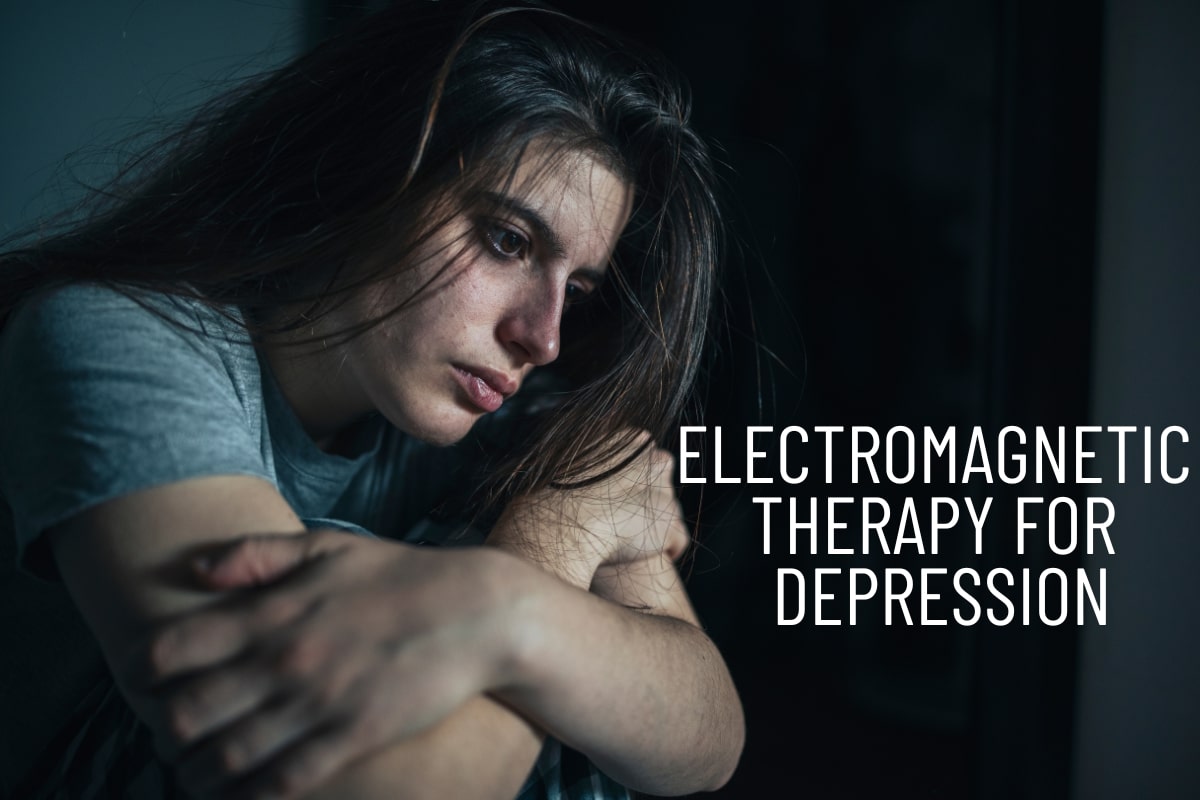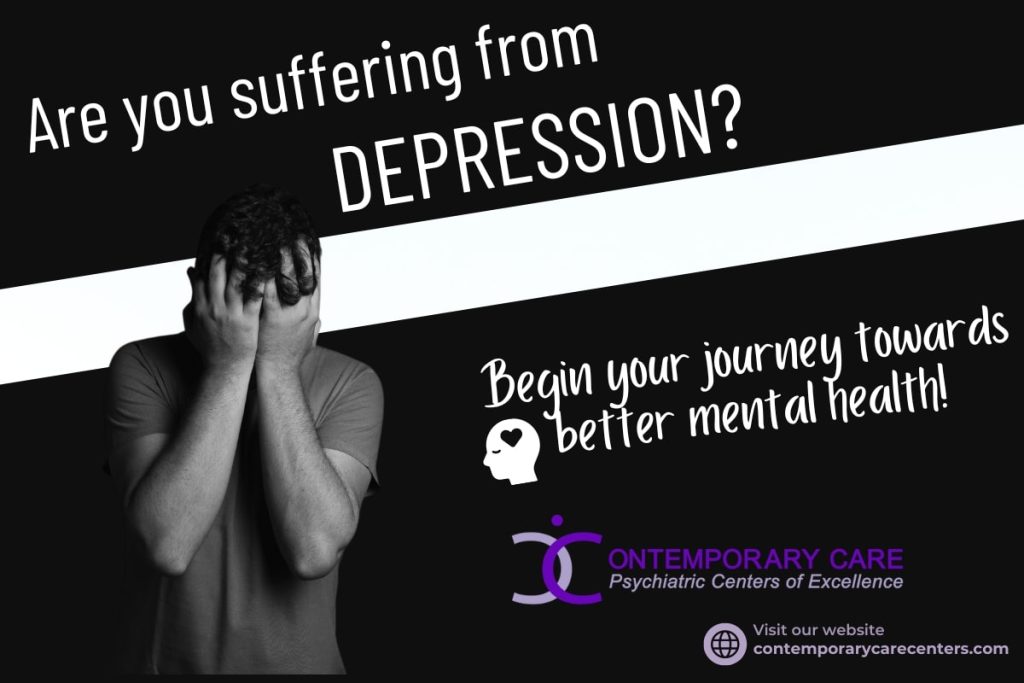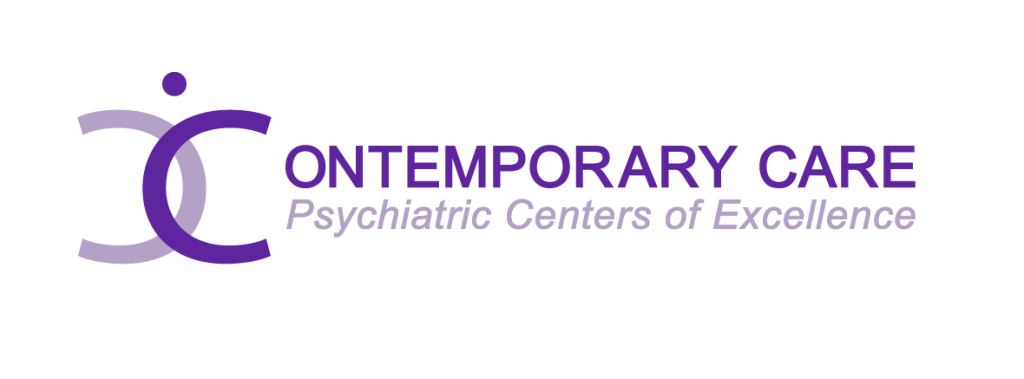Depression affects millions worldwide, and there are various treatments available for it. Although traditional remedies such as medication and talk therapy might initially provide some respite from depression symptoms, over time their effectiveness wanes over time. An increasingly promising solution might be electromagnetic brain stimulation therapy as an electromagnetic therapy for depression; its safety remains to be examined, however! Are You Curious About Medical Cannabis Therapies? Join me as we dive deeper and discuss all there is to know! Let’s uncover everything necessary!
What is Electromagnetic Therapy for Depression?
Electromagnetic Therapy for Major Depression is an innovative noninvasive therapy using magnetic fields to stimulate nerve cells within the brain to alleviate significant depression symptoms that have not responded well to other treatments, like vagus nerve stimulation or deep brain stimulation. Furthermore, Transcranial Magnetic Stimulation does not cause seizures or memory loss like its counterpart, Electroconvulsive Therapy or Electroconvulsive Therapy (ECT).
How Does Magnetic Brain Stimulation for Depression Work?
Transcranial Magnetic Stimulation, more popularly referred to as electromagnetic therapy for major depressive disorder (TDD), is an emerging treatment strategy against symptoms related to depression. Let us investigate its mechanism.
Magnetic Pulses
TMS therapy begins by placing an electromagnetic coil against the scalp near the forehead. When activated, this coil creates an orthogonally aligned magnetic field, creating an electric current within the brain and activating nearby nerve cells.
Non-Invasive Procedure: TMS therapy is a non-invasive technique to treat depression that does not require surgery or craniotomy procedures; instead, magnetic pulses travel through your skull without damaging skin or hair in any way.
Pain-Free Delivery: Pulses used during this procedure do not cause physical discomfort during its completion.
Stimulating Nerve Cells
Magnetic pulses were administered to specific brain regions associated with mood regulation – specifically the dorsolateral prefrontal cortex, which has long been identified as being pivotal in depression.
Cortical Stimulation: Magnetic pulses depolarize cortical neurons to induce cortical stimulation, which stimulates underactive nerve cells within the brain, elevating mood and diminishing symptoms of depression.
Electromagnetic Induction (EMI): TMS utilizes electromagnetic induction to generate an electric current across the scalp and skull, stimulating brain cells.
Session Duration
TMS sessions usually last 30-40 minutes each, and patients typically require multiple treatments over several weeks for maximum results.
Frequency of Sessions: For optimal treatment outcomes, most courses of treatment involve five weekly visits for four or six weeks of a total of 20-30 sessions, typically meeting five times each day (five sessions in all).
Theta-Burst Stimulation (TBS): For those interested in advanced forms of TMS therapy, like Theta-Burst Stimulation, TBS uses particular patterns of pulses that accelerate treatment time five or six times faster. TBS may provide bursts of higher frequency pulses at intervals to make treatment quicker than traditional methods.
Mechanism of Action
TMS therapy appears to work by decreasing depression through various undetermined mechanisms; theories include these.
Neuroplasticity: The brain’s capacity to form new neural connections reorganize itself through TMS stimulation. Thus aiding with mood regulation and cognitive performance. It can assist with better mood regulation as well as cognitive performance.
Resetting Brain Networks: TMS may assist in resetting neural pathways responsible for mood regulation, providing the body’s electrical activity a much-needed “reboot.”
Increased Neurotransmitter Activity: TMS has been shown to boost the activity of certain neurotransmitters like serotonin, dopamine, and norepinephrine, which tend to become imbalanced when an individual suffers from depression.
Personalized TMS Treatment
TMS treatments can be tailored specifically to each patient. Prospective patients undergo an in-depth assessment before beginning TMS therapy to design their ideal action plan and optimise results.
Targeting Specific Brain Areas: To deliver magnetic pulses effectively and ensure their delivery to all regions requiring mood regulation. Our treatment coil is carefully placed to address specific brain regions involved with mood regulation. By targeting specific brain areas for treatment delivery is ensured.
Adjust Pulse Intensity: Magnetic pulse intensity may be adjusted based on each patient’s response to therapy to maximize benefits while mitigating potential side effects.
Magnetic brain stimulation for depression uses magnetic pulses to target areas of the brain involved with mood regulation. This noninvasive and painless method has proven highly successful at relieving symptoms associated with depression in individuals who had not responded positively to traditional treatments, continuing to offer hope to those battling mental illnesses.
Effectiveness of Electromagnetic Therapy for Depression
Electromagnetic Therapy for Treating Depression with Transcranial Magnetic Stimulation (TMS) has gained worldwide acclaim as an innovative means to alleviate treatment-resistant depression symptoms in individuals. We explore its evidence base and long-term advantages more extensively here.
Clinical Trials and Studies
Studies evaluating TMS therapy as a potential treatment option for depression have yielded considerable data demonstrating its success at relieving symptoms where other approaches have failed.
Key Findings from Clinical Trials
Response Rates: Studies show that 50-60% of patients respond positively to TMS therapy. Over half of those receiving repeated transcranial magnetic stimulation therapy report experiencing relief of depressive symptoms as a result.
Meta-Analyses: Meta-analyses have supported these results, showing consistent response rates across populations and study designs.
Comparative Studies: Compared to placebo treatments, TMS has demonstrated significantly higher response rates, attesting to its efficacy.
Remission Rates: Roughly one-third of patients reach complete remission, meaning all their symptoms resolve entirely themselves.
Sustained Remission: Studies have indicated that certain patients maintain remission for many months post-treatment.
Predictors of Remission: Researchers are conducting studies to identify predictors of remission, such as specific brain activity patterns or genetic markers that would help tailor TMS treatments to each person’s needs.
Specific Study Examples
The STAR*D Trial: OAs one of the most significant studies addressing treatment-resistant depression, the Sequenced Treatment Alternatives to Relieve Depression trial highlighted the need for alternative therapies like TMS as viable solutions. Subsequent analyses have confirmed its efficacy for similar participants who didn’t respond well to multiple antidepressant drugs used during this experiment.
Randomized Controlled Trials (RCTs): Numerous RCTs have demonstrated the efficacy of TMS therapy. A landmark study published by “The Archives of General Psychiatry” demonstrated how TMS treatment resulted in significantly more significant improvements than its sham counterpart therapy for depression scores.
Long-term Benefits
Although TMS may bring immediate comfort, its long-term ramifications must also be carefully assessed.
Maintenance Sessions
Sustaining Effects: While patients often feel relief after initiating TMS treatment, follow-up maintenance sessions may be needed to maintain these benefits for extended use.
Frequency of Maintenance: The frequency of maintenance sessions will depend upon individual patient needs; some might need them monthly while others less frequently.
Tapering Off: As your mood stabilizes, your maintenance sessions can gradually diminish.
Long-term Study Findings
Durability of Response: Long-term follow-up studies have demonstrated that many patients can maintain significant improvements in depressive symptoms for several months to over one year after finishing a course of TMS therapy.
One-Year Follow-Up: According to research published in the Journal of Clinical Psychiatry, roughly 50% of patients maintained their response one year after treatment, with some needing periodic maintenance sessions as necessary.
Two-Year Follow-Up: According to another study, approximately 30% of patients remained in remission two years post-treatment, showing its long-term potential benefits.
Ongoing Research
Optimization of Protocols: Researchers constantly strive to perfect TMS protocols to enhance long-term effectiveness. This includes investigating various stimulation parameters like pulse frequency and duration to maximize benefits.
Combination Therapies: Recent research is exploring combining TMS with other treatments, such as psychotherapy or medication, to increase the long-term benefits of therapy, with cognitive-behavioural therapy (CBT) providing additional advantages over time.
Neuroimaging Studies: New advances in neuroimaging technologies are helping researchers better understand how TMS alters brain connectivity and function. This knowledge could assist with creating more targeted treatments that are more effective.
Patient-Centered Outcomes
Quality of Life Improvements: TMS therapy has been demonstrated to significantly enhance its users’ overall quality of life, including work productivity, social functioning, and daily activities.
Patient Satisfaction: TMS treatment has received high marks for patient satisfaction, with many opting for TMS due to reduced side effects versus traditional antidepressant drugs.
Research and ongoing studies show the benefits of electrotherapy (TMS), particularly transcranial magnetic stimulation. While the initial responses and remission rates are favourable, their long-term benefits, as well as the maintenance sessions, show their effectiveness in the development of individualized treatment plans for patients suffering from depression. While research on TMS as a genuine yet secure method of treatment choice against depression continues to progress, the possibilities for its use are exciting for treating obsessive-compulsive disorder (OCD) and smoking.
Safety of Electromagnetic Therapy for Depression
Common Side Effects
As with any medical treatment, TMS may cause side effects; most tend to be mild and temporary.
Headaches: Some patients report mild headaches following treatment sessions. These discomforts are easily manageable with over-the-counter pain relievers.
Scalp Discomfort: Mild discomfort or tingling at the treatment site may arise during or after each session, but these should resolve shortly afterwards.
Lightheadedness: Some patients may experience lightheadedness immediately following treatment.
Serious Side Effects
Even though serious adverse events are rare, you should consult your healthcare provider immediately as soon as symptoms emerge.
Seizures: Even though rare, TMS treatment carries with it some risk for seizures; that’s why only qualified professionals should administer TMS therapy.
Hearing Problems: TMS uses loud clicking sounds, so hearing protection must be worn to avoid hearing-related problems.
Who Can Benefit from Magnetic Brain Stimulation for Depression?
Treatment-Resistant Depression
TMS therapy may prove effective for individuals experiencing treatment-resistant depression, specifically those who have tried multiple antidepressant medications without success.
Non-Medication Option
TMS therapy may provide a viable non-drug option for individuals looking to reduce adverse side effects from medication or for other reasons, providing them a way of alleviating distress without resorting to pills.
Complementary Therapy
TMS may be combined with psychotherapy and medication therapies as part of an integrative strategy to address depression effectively.
Who Should Avoid Electromagnetic Therapy for Depression?
Medical Contraindications
Specific health issues may preclude TMS treatment from being suitable for some individuals.
Metal Implants: People with metal implants near or in their heads, including dental fillings, should avoid TMS treatment.
Seizure Disorders: Anyone experiencing seizures or epilepsy should exercise extreme caution and consult their physician as soon as possible.
Pregnancy
Pregnant women looking to use TMS therapy during gestation must consult with their healthcare provider if they plan to utilize this modality during their gestation period.
Preparing for a TMS Session
Initial Evaluation
Before beginning TMS treatment, patients must undergo an exhaustive assessment to ascertain its suitability.
Medical History: Conveying all relevant details will help identify possible threats or dangers.
Physical Exam: Conduct a physical and neurological exam to ensure no preexisting conditions might interfere with TMS therapy.
What to Expect During Treatment
Comfortable Setting: TMS sessions take place in an easygoing outpatient environment.
Awake and Alert: Patients Remain Awake and Alert Throughout. All procedures are conducted without anaesthesia or sedation, and patients remain fully conscious during each phase.
Minimal Disruption: Following every session, patients can quickly resume their normal activities without interruption or delay.
Post-Treatment Care and Monitoring
Immediate Aftercare
After each TMS session, patients are closely observed for any adverse side effects or immediate concerns that may arise.
Observation: Healthcare providers will observe you briefly to ensure no adverse reactions arise from treatment.
Monitoring Symptom: Monitoring changes to your symptoms is one way of measuring their impact and effectiveness of treatment.
Long-Term Follow-Up
Ongoing appointments to monitor progress and assess any necessary maintenance sessions are crucial for evaluating progress, monitoring improvement, and determining maintenance needs.
Progress Evaluation: Healthcare providers will regularly evaluate your progress and adjust any necessary elements of the treatment plan accordingly.
Ongoing Support: Accessing additional assistance, such as counselling or support groups, may prove valuable in providing ongoing assistance and relief from symptoms of anxiety and stress.
Cost and Accessibility of Electromagnetic Therapy for Depression
Insurance Coverage
Your TMS provider’s policies differ, and you must contact them regarding coverage options and limitations.
Pre-authorization: Some insurance plans require preauthorization before covering TMS treatments.
Coverage Details: Gaining insight into your insurance policy details will enable you to control costs more efficiently.
Out-of-Pocket Costs
Due to the potential out-of-pocket expenses related to TMS treatment, investigation of payment plans or financial aid programs could prove crucial.
Cost Per Session: Sessions typically cost between $300 to $500.
Total Cost: The overall costs can rapidly escalate when multiple sessions are necessary to address hearing-related issues.
Electromagnetic Therapy for Depression: Real-Life Experiences
Patient Testimonials
Hearing about someone’s experience of TMS treatment can provide invaluable insights.
Success Stories: Many patients report significant improvements in mood and quality of life after receiving our treatments.
Challenges: Understanding the challenges that others face is vital to setting realistic expectations and accurate plans.
Expert Opinions
Consulting healthcare specialists specializing in TMS may give a greater insight into its use.
Professional Insights: Experts provide valuable insight into the safety and effectiveness of TMS systems.
Customized Advice: For optimal TMS results, seek personalized guidance from a healthcare provider who can tailor it specifically to you.
Future of Magnetic Brain Stimulation for Depression
Ongoing Research
Research in TMS and related forms of magnetic brain stimulation as treatments for depression is underway, and breakthroughs could soon emerge.
Innovative Techniques: New techniques and technologies are being devised to further the effectiveness of TMS.
Broader Applications: Researchers are exploring TMS as an option to treat mental health disorders other than depression.
Expanding Accessibility
Making TMS more widely accessible remains one of the main objectives of efforts to increase availability.
Reducing Costs: Initiatives are underway to lower costs and increase insurance coverage.
Raising Awareness: Awareness of TMS can enable more individuals to experience its innovative benefits.
The use of electromagnetic therapy, also known as magnet brain stimulation to treat depression (TMS), provides relief and hope to those who haven’t had success with conventional methods yet. Although TMS is not without risk, its benefits often outweigh the risks for many people. You can find out the benefits of TMS by talking to health professionals as you decide whether TMS is a viable option. More and more people with depression have found relief through TMS as time passes.
The Best Electromagnetic Therapy for Depression Center Near Me:
Are you suffering from depression, Bipolar Disorder, or Post Traumatic Stress Disorder (PTSD)? Contemporary Care Centers specialize in complete mental health services, providing therapy sessions and medication management that are specifically designed for every person’s specific requirements – such as the use of electromagnetic therapy to treat depression. We use cutting-edge treatment techniques, such as electromagnetic therapy, that offer long-lasting relief and improve the well-being of our patients. Contact us now and begin your journey towards better mental health – book an appointment with a consultant, explore our personalized care options, and start the journey to improved mental well-being and looking towards a brighter future!




